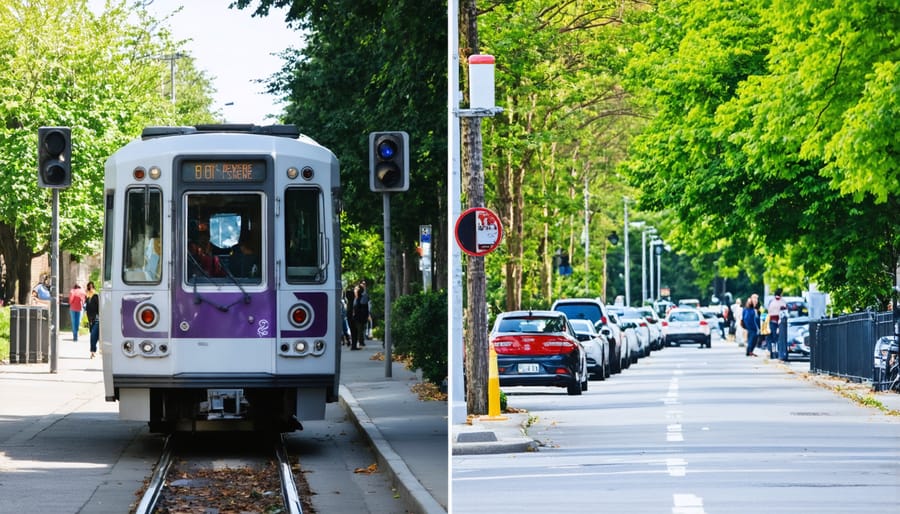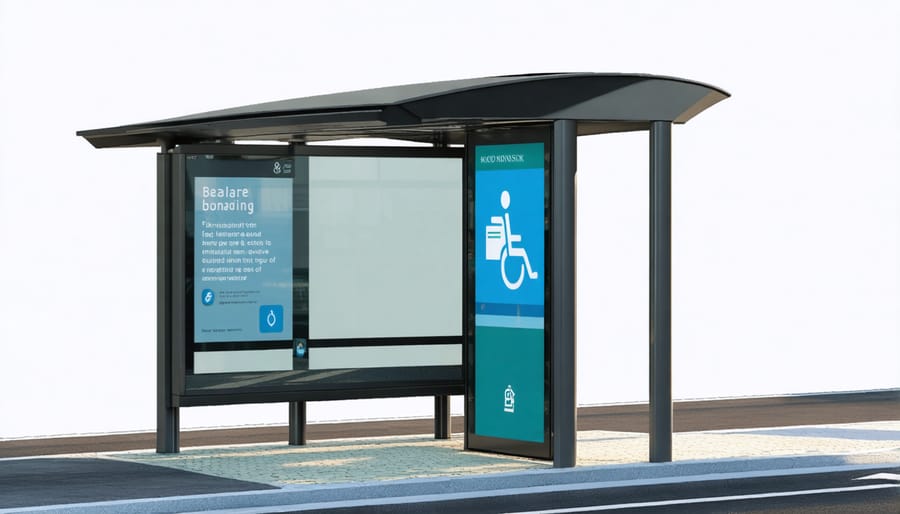Transforming urban mobility requires a fundamental shift in how we design, implement, and maintain transportation systems that serve all community members equitably. As cities grapple with urban sustainability challenges, equitable transportation has emerged as a critical cornerstone of inclusive urban development. Recent data reveals that low-income neighborhoods face up to 60% longer commute times and significantly reduced access to economic opportunities compared to affluent areas.
For construction professionals and urban planners, creating truly equitable transportation infrastructure demands a comprehensive approach that integrates technical expertise with social impact assessment. This means moving beyond traditional metrics of efficiency and cost-effectiveness to incorporate accessibility, affordability, and community connectivity as core design principles. The most successful equitable transportation projects demonstrate that when infrastructure development aligns with social equity goals, it generates measurable improvements in community outcomes, economic mobility, and urban resilience.
Modern transportation equity encompasses multimodal systems, universal design principles, and data-driven planning methodologies that ensure fair distribution of resources and access across all demographic groups. This approach requires innovative construction solutions, strategic infrastructure placement, and collaborative engagement with affected communities throughout the development process.
The True Cost of Transportation Inequality

Economic Impact on Communities
Limited transit access significantly impacts local economies through reduced job accessibility and stunted economic growth. Studies show that communities with inadequate transportation infrastructure experience up to 30% lower employment rates compared to well-connected areas. The “spatial mismatch” between residential locations and job centers particularly affects low-income workers, who often face commute times exceeding two hours each way.
Research from the Urban Institute demonstrates that every $1 billion invested in transit infrastructure generates approximately 50,000 jobs and $3.7 billion in economic activity. Additionally, businesses located in areas with robust public transportation report 40% higher customer foot traffic and increased workforce retention rates.
Inadequate transportation creates a cycle of economic disadvantage: limited mobility restricts access to education, healthcare, and employment opportunities, which in turn affects household income and community development. Small businesses in transit-poor areas experience reduced customer bases and higher employee turnover, leading to decreased economic vitality.
Recent case studies in metropolitan areas show that implementing equitable transportation solutions can increase local business revenue by up to 25% and reduce unemployment rates by 12% within three years of implementation.
Health and Environmental Consequences
Transportation inequity significantly impacts public health outcomes in underserved communities, with studies showing disproportionate exposure to vehicular emissions and particulate matter in low-income neighborhoods. Research indicates that residents in these areas face up to 2.5 times higher exposure to transportation-related air pollutants compared to more affluent districts, leading to increased rates of respiratory diseases, cardiovascular conditions, and other health complications.
Environmental justice concerns are particularly evident in communities adjacent to major transportation corridors, where residents experience elevated levels of noise pollution, reduced air quality, and higher instances of heat island effects. These factors contribute to documented disparities in health outcomes, including higher rates of asthma among children and increased cardiovascular disease risk among adults.
The placement of transportation infrastructure historically has resulted in concentrated pollution zones in disadvantaged communities. Recent environmental impact assessments reveal that communities near freight routes and major highways experience significantly higher levels of PM2.5 and nitrogen oxide emissions. This environmental burden extends beyond immediate health impacts, affecting local economic development, property values, and overall quality of life, creating a cycle of disadvantage that requires targeted intervention through equitable transportation planning and infrastructure development.
Engineering Solutions for Inclusive Mobility
Universal Design Principles
Universal design principles in transportation infrastructure require careful consideration of accessibility features that accommodate all users, regardless of their physical capabilities or mobility needs. Key implementations include level boarding platforms with minimal gaps, tactile guidance systems, and clear wayfinding elements that utilize both visual and auditory cues.
Critical design elements encompass wheelchair-accessible ramps with appropriate gradients (typically 1:12 or gentler), elevators at all level changes, and adequate turning radiuses in circulation areas (minimum 1.5 meters). These features must be integrated seamlessly into the overall design rather than appearing as afterthoughts.
Lighting plays a crucial role in universal design, with consistent illumination levels required throughout transit facilities. This includes enhanced lighting at decision points and potential hazard areas, helping visitors with visual impairments navigate safely. Additionally, high-contrast color schemes and non-slip surface treatments improve safety and orientation for all users.
Modern universal design also incorporates smart technology solutions, such as real-time information displays with both visual and audio outputs, and accessible fare payment systems positioned at appropriate heights. Seating areas must include spaces for wheelchair users integrated within general seating zones, promoting social inclusion.
Construction professionals should consider maintenance requirements during the design phase, ensuring accessibility features remain functional throughout the infrastructure’s lifecycle. This proactive approach helps create truly equitable transportation systems that serve the entire community effectively.

Smart Technology Integration
Digital solutions are revolutionizing transportation equity through integrated smart systems that enhance accessibility and service delivery. Real-time transit tracking applications enable riders to optimize their travel plans, reducing wait times and improving reliability for communities that heavily depend on public transportation. These systems collect and analyze usage patterns, helping transit authorities make data-driven decisions about route optimization and service frequency adjustments.
Mobile payment solutions and digital fare systems are eliminating traditional barriers to transit access, particularly benefiting unbanked populations through convenient payment alternatives. Smart card integration and mobile ticketing reduce transaction costs and enable fare capping programs, ensuring frequent riders from lower-income backgrounds never pay more than necessary for their transit needs.
Connected infrastructure systems, including smart traffic signals and dynamic routing algorithms, prioritize public transit vehicles and improve service reliability. These technologies reduce travel times and enhance the predictability of arrival schedules, critical factors for workers who rely on precise timing for their commutes.
Artificial Intelligence and machine learning applications are being deployed to analyze ridership patterns and demographic data, helping agencies identify service gaps in underserved communities. This data-driven approach enables more equitable resource allocation and service expansion planning, ensuring transportation investments benefit all community segments.
Interactive kiosks and multilingual digital information systems at transit stops provide real-time updates and route information in multiple languages, making public transportation more accessible to diverse populations, including non-English speakers and visitors.
Last-Mile Connectivity Solutions
Last-mile connectivity remains one of the most critical challenges in achieving truly equitable transportation systems. Professional transit planners and construction specialists are increasingly implementing innovative solutions that bridge the gap between major transit hubs and final destinations.
Micro-mobility options, including shared bicycle systems and electric scooters, have proven highly effective when integrated with urban green infrastructure. These systems require careful planning of docking stations, charging infrastructure, and dedicated lanes to ensure safe, efficient operation.
Autonomous shuttle services are emerging as a promising solution, particularly in areas with limited traditional transit coverage. These vehicles operate on fixed routes or on-demand services, utilizing advanced navigation systems and smart infrastructure to provide reliable connectivity.
Infrastructure modifications play a crucial role in last-mile solutions. These include:
– Enhanced pedestrian pathways with weather protection
– Dedicated micro-mobility lanes
– Smart lighting systems for improved safety
– Digital wayfinding installations
– Accessible design features for mobility-impaired users
Mobile applications integrating real-time transit data, payment systems, and route optimization have become essential tools in managing last-mile services. These platforms enable users to seamlessly transition between different modes of transportation while providing valuable usage data for system optimization and expansion planning.
Success in last-mile connectivity requires coordinated efforts between transit authorities, construction teams, and technology providers to create comprehensive, accessible solutions that serve all community members effectively.
Case Studies: Equity in Action
Barcelona’s Superblocks
Barcelona’s Superblocks initiative stands as one of the most transformative urban projects in contemporary mobility design, revolutionizing the conventional street grid system to prioritize pedestrian accessibility and community engagement. The model reorganizes the city into 400×400-meter blocks, effectively transforming former vehicular thoroughfares into pedestrian-priority zones and public spaces.
The technical implementation involves strategic traffic channeling along perimeter roads while internal streets are reconfigured with speed limits of 10 km/h. This restructuring has yielded remarkable results: a 25% reduction in ambient noise levels, a 40% decrease in nitrogen dioxide emissions, and the creation of approximately 33,000 square meters of new public space per superblock.
The engineering framework encompasses sophisticated traffic flow modeling, incorporating smart signaling systems and modified road geometries. Key design elements include:
– Tactical urbanism interventions using modular street furniture
– Integration of sustainable drainage systems
– Implementation of smart mobility sensors
– Strategic placement of urban greenery and permeable surfaces
Construction professionals have noted the cost-effectiveness of the superblock approach, with implementation costs averaging €500,000 per block – significantly lower than traditional urban renewal projects. The modular nature of the interventions allows for phased implementation and real-time adjustment based on community feedback and usage patterns.
This model demonstrates how strategic urban planning can simultaneously address mobility needs, environmental concerns, and social equity. The success has prompted cities worldwide to adopt similar approaches, proving that radical transformation of existing urban infrastructure is both feasible and economically viable.

Portland’s Transit Equity Framework
Portland’s transit equity framework stands as a pioneering model in the infrastructure sector, demonstrating how cities can systematically address transportation disparities through strategic planning and implementation. The framework, developed through extensive community engagement and data analysis, prioritizes historically underserved neighborhoods while maintaining system-wide efficiency.
At its core, the framework utilizes a three-tiered approach: infrastructure distribution, service frequency optimization, and fare equity. The city implements this through careful placement of transit stops, analyzing population density and demographic data to ensure maximum accessibility. Construction professionals have noted that the framework’s technical specifications for bus rapid transit lanes and light rail extensions specifically account for neighborhood connectivity needs.
The framework mandates that all major transit projects undergo an equity impact assessment, which evaluates potential displacement risks, construction impacts on local businesses, and accessibility improvements. This assessment includes detailed metrics such as travel time reduction, job access increases, and environmental health benefits for disadvantaged communities.
Notable success metrics include a 35% increase in transit access for low-income neighborhoods and a 40% improvement in cross-town connection times. The framework has also pioneered innovative solutions such as sliding-scale fare programs and transit-oriented development requirements that mandate affordable housing near major transit hubs.
Construction teams working within this framework must adhere to specific guidelines for community engagement and impact mitigation. These include maintaining pedestrian access during construction, providing multilingual communication about service changes, and incorporating universal design principles that exceed standard ADA requirements. The framework’s success has made it a reference point for other cities developing their own equity-focused transit systems.
Implementation Framework for Cities
Policy Recommendations
To achieve equitable transportation outcomes, policymakers and developers must implement comprehensive measures that address both infrastructure development and social considerations. Key recommendations include establishing minimum service standards for all neighborhoods, particularly in historically underserved areas, and mandating accessibility features in all new transit projects.
Transportation agencies should adopt data-driven equity assessment tools to evaluate project impacts across different demographic groups. These assessments should inform resource allocation and project prioritization, ensuring fair distribution of transportation investments across communities.
Public-private partnership frameworks must incorporate equity requirements, including local hiring provisions and community benefit agreements. Implementation of sliding-scale fare structures and subsidized transit passes for low-income residents can help ensure affordability without compromising service quality.
Zoning policies should promote transit-oriented development while including provisions for affordable housing near transit hubs. Additionally, agencies should establish meaningful community engagement processes, requiring early and continuous involvement of affected populations in project planning and design phases.
Regular equity audits and performance monitoring systems should be implemented to track progress and adjust strategies as needed, ensuring long-term commitment to transportation equity goals.
Stakeholder Engagement Strategies
Successful implementation of equitable transportation projects requires comprehensive effective stakeholder engagement throughout all project phases. Best practices include establishing community advisory boards that represent diverse demographic groups, conducting multilingual outreach programs, and implementing digital engagement platforms to maximize participation.
Transportation planners should prioritize early engagement through community workshops, design charrettes, and neighborhood walking audits. These activities help identify local mobility needs, cultural considerations, and potential barriers to access. Regular feedback loops through surveys, public forums, and digital dashboards ensure continuous communication between project teams and community members.
Documentation of engagement efforts should track participation demographics, feedback incorporation, and resolution of community concerns. This data-driven approach helps validate that traditionally underserved populations have meaningful input in the planning process. Successful engagement strategies also include partnerships with local organizations, faith-based groups, and community leaders who can serve as trusted intermediaries between project teams and residents.
To maintain long-term community support, project teams should establish clear accountability measures and transparent reporting mechanisms that demonstrate how stakeholder input influences final design decisions and implementation strategies.
The transformation of our transportation systems represents one of the most significant opportunities to create lasting social impact in our communities. As industry professionals, we have both the responsibility and capability to reshape mobility infrastructure in ways that serve all members of society equitably. By implementing the strategies and solutions discussed throughout this article, we can create transportation networks that break down socioeconomic barriers, enhance accessibility, and foster sustainable urban development. The time to act is now – whether through incorporating universal design principles, adopting new technologies, or engaging communities in meaningful dialogue. Every project presents an opportunity to advance transportation equity. Let us commit to making informed decisions that prioritize inclusivity and fairness in our transportation infrastructure, creating lasting positive change for generations to come. The future of equitable mobility depends on the choices we make today.

